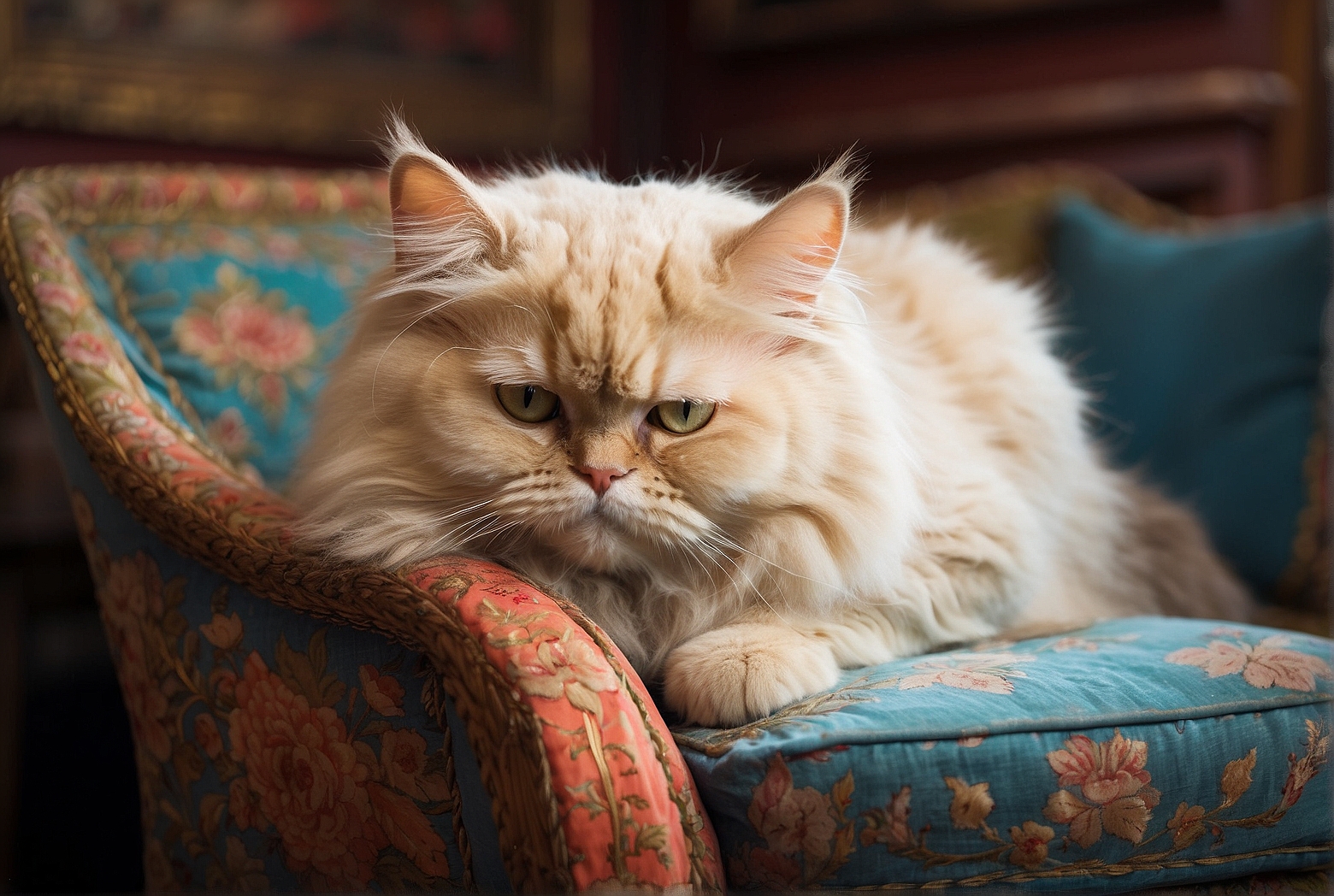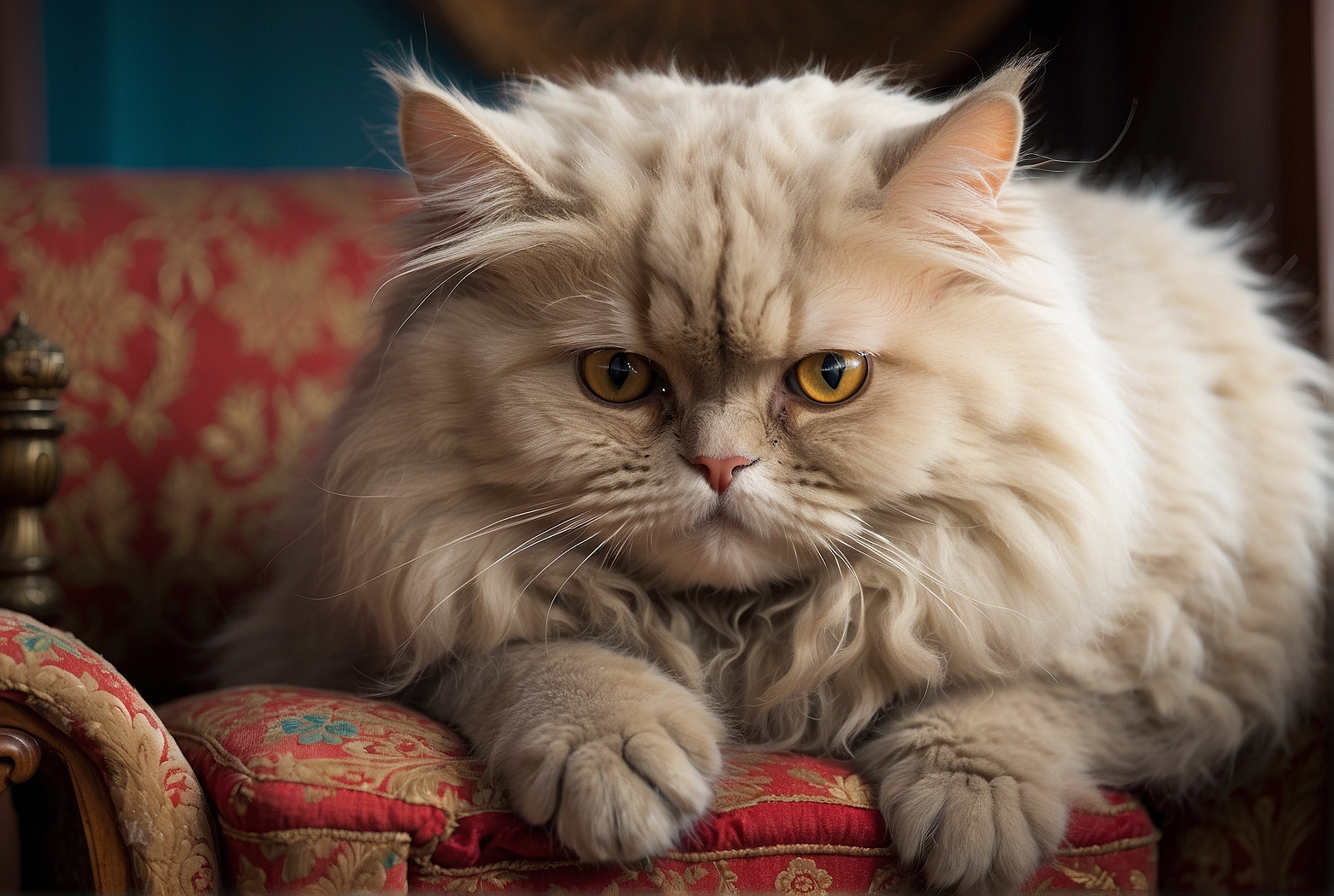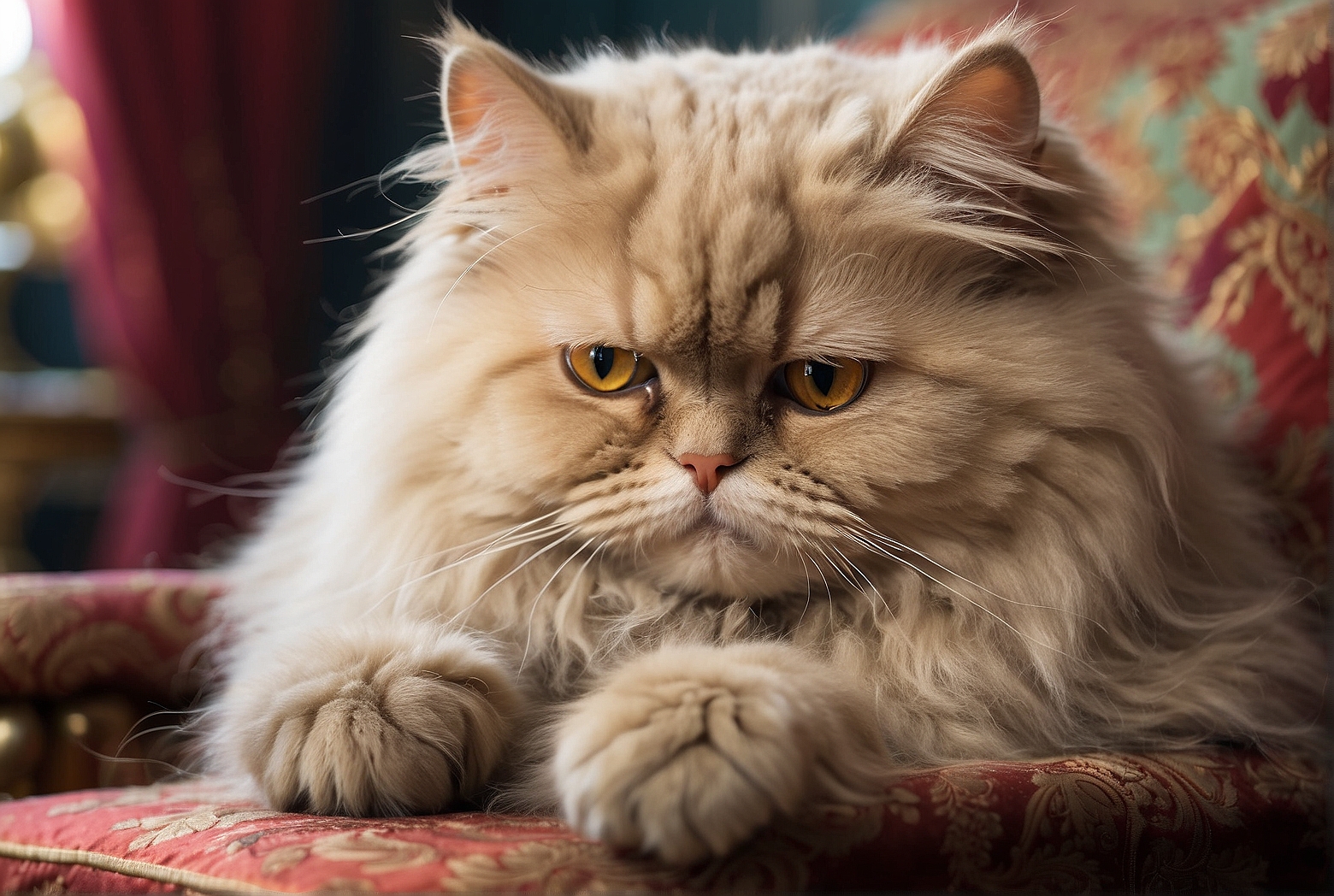If you’ve ever owned a Persian cat or have been considering getting one, you may have wondered about their scratching habits. Persian cats are known for their luxurious coats and gentle demeanor, but do they also have a penchant for scratching furniture? In this article, we’ll explore the scratching tendencies of Persian cats and provide tips on how to protect your cherished furniture from their claws.
Understanding Persian Cats
If you are an owner or future owner of a Persian cat, it’s essential to understand their unique characteristics, personality traits, and grooming needs. By gaining a comprehensive understanding of Persian cats, you can cultivate a harmonious and fulfilling relationship with your feline companion.
Characteristics of Persian Cats
Persian cats are known for their distinctive features, including their long, luxurious coats, round faces, and expressive eyes. These cats have a sturdy build, with a broad chest and short legs. With their charming appearance and graceful movements, Persian cats never fail to captivate their owners.
Personality of Persian Cats
Persian cats are renowned for their gentle and calm nature. They are typically affectionate and enjoy being in the company of their human companions. These cats tend to prefer a serene and peaceful environment, making them well-suited for indoor living. Persian cats are often described as being dignified and reserved but still retain a playful and curious side.
Grooming Needs of Persian Cats
One of the most unique aspects of Persian cats is their luxurious coat, which necessitates regular grooming. Their long, thick fur requires daily brushing to prevent matting and tangling. Additionally, Persian cats are prone to tear stains, so their eyes should be gently cleaned to maintain their stunning appearance. Routine bathing is also necessary to keep their coats clean and healthy.
Natural Instincts of Cats
To fully understand a cat’s behavior, it’s crucial to recognize and appreciate their natural instincts. Scratching is a natural behavior for cats and serves various essential purposes in their lives.

Scratching as a Natural Behavior
Scratching is an innate behavior for cats that serves multiple functions. Firstly, it helps them shed the outer layer of their claws, allowing new, sharper claws to grow. Additionally, scratching helps cats stretch and exercise their muscles, promoting overall physical health. Lastly, scratching acts as a means of communication, leaving visual and scent marks to establish territory.
Reasons Why Cats Scratch
There are various reasons why cats indulge in scratching. It can be an expression of joy, pleasure, or even frustration. Cats may also scratch to relieve stress or anxiety, providing them with a comforting outlet for their emotions. Furthermore, scratching can be a sign of excitement or anticipation, especially during playtime.
Importance of Scratching for Cats
Scratching is an integral part of a cat’s well-being, as it fulfills their instinctual needs. By scratching, cats can maintain healthy claws, keep their muscles toned, and manage stress levels. Furthermore, scratching allows cats to effectively mark their territory and communicate with other felines.
Scratching Behavior of Persian Cats
While scratching is a natural behavior for all cats, you may wonder if Persian cats are prone to scratching furniture and upholstery.
Do Persian Cats Scratch Furniture?
Yes, Persian cats are known to engage in scratching behaviors, including scratching furniture. However, it’s crucial to understand that not all Persian cats exhibit the same scratching habits. Some may have a stronger inclination to scratch furniture than others. By understanding the reasons behind scratching behavior and implementing appropriate solutions, you can minimize damage to your beloved furniture.
Frequency of Scratching
The frequency of scratching can vary among Persian cats. Some may scratch more frequently as a way to maintain their claws, stretch their muscles, or mark their territory. Others may engage in less scratching activity. It’s essential to observe your Persian cat’s scratching habits to gain insight into their individual preferences.

Preference for Specific Types of Furniture
Persian cats may develop preferences for certain types of furniture when it comes to scratching. Some cats may gravitate towards vertical scratching surfaces, such as couch corners or wooden table legs. Others may prefer horizontal scratching options, such as rugs or carpets. Identifying your Persian cat’s preferences can help you provide suitable alternatives and protect your furniture.
Preventing Furniture Scratching
While it’s natural for Persian cats to scratch, there are several effective strategies to prevent them from damaging your furniture.
Providing Suitable Scratching Posts
Offering appropriate scratching posts is essential for redirecting your Persian cat’s scratching behavior. Opt for sturdy scratching posts that are tall enough for your cat to stretch fully. Consider posts made of sisal rope or other materials that mimic the texture of furniture. Placing multiple scratching posts throughout your home can provide your cat with various options and help deter them from furniture.
Placing Scratching Posts Strategically
Strategic placement of scratching posts can greatly impact your Persian cat’s preference for them. Position the posts in areas where your cat spends the most time or near furniture they enjoy scratching. By ensuring that the posts are easily accessible and visible, you increase the likelihood of your cat utilizing them instead of your furniture.
Using Deterrents and Repellents
In cases where your Persian cat continues to show interest in scratching specific furniture, using deterrents or repellents can be effective. Various products, such as sprays or sticky tapes, are designed to discourage cats from scratching certain surfaces. It’s important to choose cat-friendly deterrents and test them in inconspicuous areas before applying them to furniture.
Training Techniques for Persian Cats
Training your Persian cat to redirect their scratching behavior can be achieved through positive reinforcement and consistent training techniques.
Positive Reinforcement Methods
Positive reinforcement is a powerful tool when it comes to training Persian cats. Rewarding cats with treats, praise, or playtime when they use the scratching posts encourages them to associate this behavior with positive experiences. This method can effectively reinforce the desired scratching behavior and reduce furniture damage.
Redirecting and Diverting Scratching Behavior
Diverting your Persian cat’s attention from furniture is key to successful training. When you catch your cat in the act of scratching furniture, gently redirect their attention to a nearby scratching post. Use positive reinforcement to reward them for using the post instead. Over time, your cat will learn to associate the scratching post with a pleasurable experience.
Discouraging Scratching on Furniture
Consistency and patience are essential when discouraging your Persian cat from scratching furniture. Avoid scolding or punishing your cat, as this will lead to fear or confusion. Instead, use deterrents or repellents on furniture and provide appealing alternatives. With time and consistent training, your cat will learn to prioritize the scratching posts.
Alternative Solutions
In addition to training and redirection, there are alternative solutions that can further prevent furniture scratching.
Soft Paws or Nail Caps
Soft Paws or nail caps are small vinyl covers that can be applied to your Persian cat’s claws. These caps are humane and painless, preventing your cat from damaging furniture when they scratch. Applying soft paws requires regular maintenance and replacing them when they fall off or wear down.
Trimming and Regular Nail Maintenance
Regular nail maintenance is essential for preventing excessive scratching and minimizing furniture damage. Trimming your Persian cat’s nails every few weeks can help keep them short and reduce the chances of them snagging furniture. Familiarize yourself with proper nail trimming techniques or seek assistance from a veterinarian or professional groomer.
Protective Furniture Coverings
If your Persian cat’s scratching behavior persists despite training and other solutions, using protective coverings on furniture can provide an additional layer of defense. These coverings act as a barrier, shielding your furniture from potential damage. They come in various materials and designs, allowing you to maintain both your cat’s comfort and your furniture’s aesthetic appeal.
Environmental Enrichment
To fulfill your Persian cat’s physical and mental stimulation needs, incorporating environmental enrichment is crucial.
Providing Entertainment and Toys
Engaging your Persian cat in playtime with interactive toys can not only deter them from scratching furniture but also provide mental stimulation. Toys that encourage exercise and mimic hunting behaviors are particularly beneficial. Rotate toys regularly to keep your cat engaged and prevent boredom.
Creating a Stimulating Environment
Ensure your Persian cat’s environment is enriched with various stimuli. Provide scratching posts, perches, and hiding spots to cater to their natural instincts. Consider incorporating cat trees or shelves near windows to satisfy their curiosity and desire for observation.
Interactive Playtime with Your Persian Cat
Spending quality time with your Persian cat is not only important for bonding but also beneficial for their overall well-being. Engaging in interactive playtime promotes exercise, mental engagement, and a positive outlet for their energy. Establish a regular play routine, using toys that encourage chasing and pouncing, to keep your cat satisfied.
Consulting a Veterinarian
If your Persian cat’s scratching behavior becomes excessive or problematic, it’s advisable to consult a veterinarian for professional guidance.
Medical Causes for Excessive Scratching
Excessive scratching can sometimes indicate underlying medical conditions. Allergies, skin irritations, or parasitic infections may cause your Persian cat to scratch excessively. A veterinarian can examine your cat, conduct relevant tests, and provide appropriate treatment if necessary.
Veterinary Advice on Behavior Modification
A veterinarian with expertise in cat behavior can offer valuable insights and guidance on modifying your Persian cat’s scratching behavior. They can review your training techniques, suggest adjustments, and provide additional strategies to address the issue effectively.
Medications or Treatments for Scratching
In certain cases, veterinary intervention may involve prescribing medications or treatments to alleviate excessive scratching. These may include topical ointments, oral medications, or specialized shampoo. Collaborating with a veterinarian ensures that your Persian cat’s health and behavioral needs are properly addressed.
Conclusion
Understanding and addressing your Persian cat’s scratching behavior is essential for maintaining a happy coexistence with your feline companion. By recognizing their natural instincts, providing appropriate scratching alternatives, and implementing positive reinforcement training techniques, you can redirect their scratching behavior away from furniture. Remember to seek veterinary advice when necessary and maintain a balance between your Persian cat’s needs and protecting your furniture. With patience, consistency, and love, you can forge a strong bond with your Persian cat while preserving the beauty of your home.
